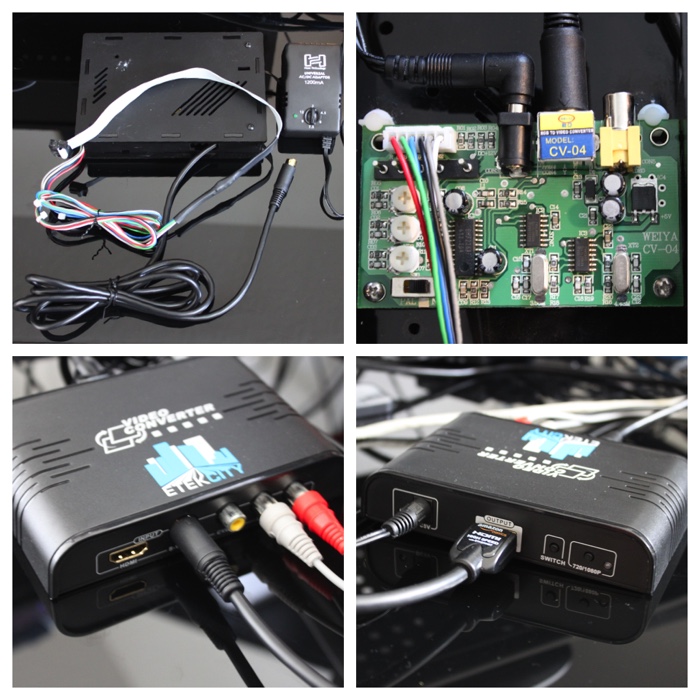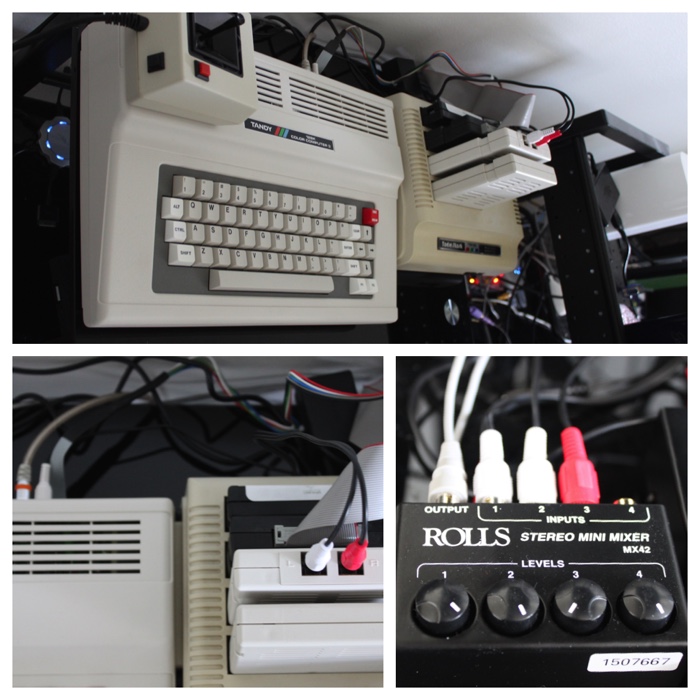Coco3 RGB to HDMI with audio
May 15, 2015 10:00 PM
I was able to complete a DIY project for a Coco3 RGB Video to upscaled HDMI with integrated stereo solution.
In my write-up of the 2015 CoCoFest, I said that I was looking for a solution for a modern high resolution output from my CoCo3. I was frustrated that the composite signal from my Coco3 to my flat panel monitor didn’t provide a readable 80-column output in NitrOS-9. Since at the moment no one was offering a finished solution I could buy, I set out on the DIY path. I personally think the solution developed by Luis Antoniosi probably yields the highest quality video output. However, my soldering and circuit building skills are not up to the task of putting 40 small components on the Osh Park board (I’m no Mark Marlette or Ed Snider). The required DE0-Nano FPGA is also $100 by itself on Adafruit.
Procuring the Components
With a Coco3-specific RGB cable that I purchased from Chris Hawks at CocoFest, I set out to try to procure the Wei-Ya CV-04 RGB to S-Video board. Chris recommended Jamma as a source for $39.95. They have been out of stock for a month. I wasn’t willing to wait. I found a source from Hong Kong, Sintron, that got me the board quickly and sold it for $30 with free registered air mail shipping. While waiting for the board to arrive from Hong Kong, I ordered the Portta S-video to HDMI Converter Upscaler box from Amazon for $39.99. I’ll save you the trouble. Don’t order the Portta box—it is a piece of junk.
The CV-04 comes as a bare board with a long cable that connects to the RGB input of the board on one end and has six color coded wires on the other end. It also comes with a connector for the DC input but requires that you provide your own DC power or AC/DC adapter. The CV-04 supports DC voltage in the +8-15V range. I purchased the voltage adjustable Hosa Universal AC/DC Power Supply from Amazon for $10.58.
Initial Test: Disappointment
Now I was ready to test out the board. I connected the board to the Coco3 with Chris’s cable and my power supply. I ran the S-Video output to the Portta box and then connected the HDMI output to my display. To my disappointment, the video output was very shaky and wasn’t any more readable in 80 column on my flat panel display than the composite output. This didn’t make any sense. I wondered if I got a bad CV-04 board. I remembered that I have the EyeTV box for my Mac that allows me to display over-the-air TV. It also has an S-Video input. I connected the S-Video signal from the CV-04 to my EyeTV box and the output was crystal clear within the window displayed on my Mac. However, this wouldn’t work as a permanent solution.
S-Video to HDMI Take Two: Success!
I went back to Amazon and found another S-Video to HDMI upscaler from Etekcity for the same price as the Portta box. The second time was a charm. Using the Etekcity converter, I had a beautiful, readable HDMI output to the screen on both my small flat panel TV as well as my high-resolution 28” Samsung 4k Monitor. As you can see from the before and after photo, it made all the difference!

Spit and Polish for the Two Box Solution
I don’t like seeing the bare CV-04 circuit board sitting out. I still have kids at home and don’t want it zapped with static. I had a spare case that I bought for a Raspberry Pi that I was able to make work to fit the CV-04 with room to spare. As I did more testing with color, I noticed that the blue wasn’t showing. It turns out that somehow I broke the small wire from Chris’s cable to the CV-04 board. Chris’s cable was a little short anyway for my setup so I decided to solder Chris’s cable to the cable that came with the CV-04 and use heat shrink to polish it off. I referred to the Coco RGB pin-out documentation found online to verify my connections.

Sound mixer to support HDMI audio
One of the great advantages of HDMI is that it carries sound as well as the digital video signal unlike VGA. I decided to buy a Rolls MX42 Stereo Mini Mixer on Amazon to finish off the solution. It is a small little box that doesn’t require any power. I took the mono sound output from the back of the CoCo3 and the stereo output from my Orchestra-90 cartridge and mixed them together with the Rolls and then sent the output to the Etekcity HDMI converter box. I now have consistent stereo sound coming out of my Coco3 to the HDMI display.

Final Thoughts
Even though I was looking for either Luis or Roy Justus’ VGA solutions, I think HDMI has more staying power as a standard than VGA. I also like the fact that I have audio integrated with the solution. In the end, I’m very happy with my DIY solution. Thanks to Chris Hawks for pointing me in the right direction.